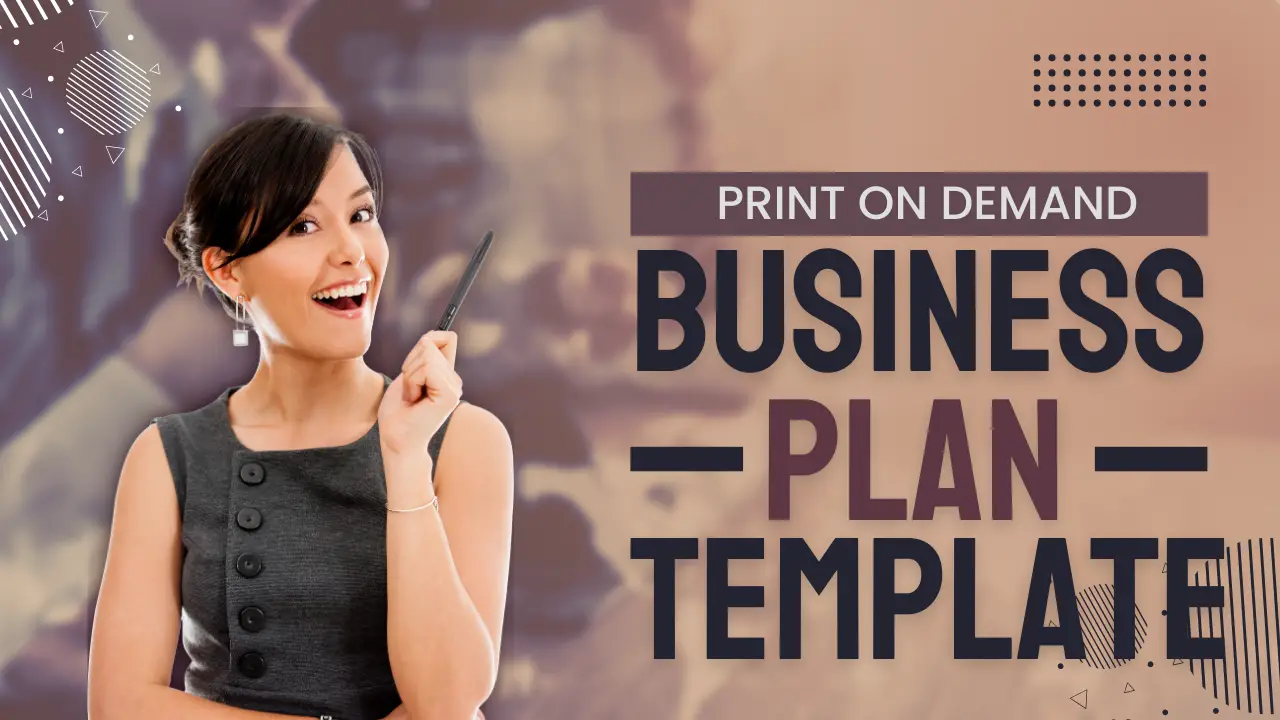Starting a print on demand (POD) business can be an exciting venture with low upfront costs and the potential for high profitability. Whether you’re looking to sell custom t-shirts, mugs, posters, or other personalized products, having a solid business plan is crucial for your success. This comprehensive template will guide you through the essential components of a print on demand business plan.
Executive Summary
Business Overview
[Your Company Name] is a print on demand (POD) business that specializes in creating custom-designed products, including apparel, home decor, and accessories. Our mission is to provide high-quality, unique items that cater to diverse customer preferences. By leveraging print on demand technology, we can offer a wide range of products without holding inventory, thus reducing overhead costs and financial risk.
Market Opportunity
The global custom printing market is growing rapidly, driven by increasing consumer demand for personalized products. According to a recent market research report, the industry is expected to reach $10 billion by 2025. This growth is fueled by advancements in printing technology, the rise of e-commerce, and shifting consumer preferences towards unique, individualized items.
Financial Projections
- Year 1 Revenue: $100,000
- Year 2 Revenue: $250,000
- Year 3 Revenue: $500,000
Profit margins are expected to increase as the business scales, with an estimated net profit margin of 20% by the end of Year 3.
Business Description
Company Overview
- Company Name: [Your Company Name]
- Founded: [Year]
- Location: [City, State]
- Business Structure: LLC/Corporation/Sole Proprietorship
Vision and Mission
- Vision: To become a leading provider of high-quality, custom-printed products that inspire creativity and individuality.
- Mission: To deliver exceptional products and customer service while promoting sustainable and ethical business practices.
Product Line
Our product offerings will include:
- Custom T-shirts
- Hoodies and Sweatshirts
- Mugs and Drinkware
- Posters and Wall Art
- Phone Cases
- Tote Bags
Each product will feature unique designs created by independent artists and our in-house design team.
Market Analysis
Target Market
Our primary target market consists of:
- Age Group: 18-35 years old
- Interests: Pop culture, fashion, art, and design
- Geographic Location: United States (with plans to expand internationally)
Market Trends
- Increasing demand for personalized products
- Growth of e-commerce and online shopping
- Rising popularity of social media influencers and online communities
Competitive Analysis
Key competitors in the print on demand market include Printful, Teespring, and Redbubble. Our competitive advantage lies in our unique designs, high-quality printing, and commitment to customer satisfaction.
Marketing and Sales Strategy
Marketing Plan
- Social Media Marketing: Utilize platforms such as Instagram, Facebook, and Pinterest to showcase our products and engage with customers.
- Content Marketing: Create a blog and YouTube channel featuring design tutorials, product reviews, and customer stories.
- Influencer Partnerships: Collaborate with influencers in our niche to promote our products to their followers.
- Email Marketing: Build an email list to send newsletters, promotions, and product updates.
Sales Strategy
- E-commerce Platform: Launch our online store using Shopify or WooCommerce.
- Print on Demand Suppliers: Partner with reliable POD suppliers such as Printful and Gooten for product fulfillment.
- Customer Service: Provide excellent customer service through live chat, email support, and a comprehensive FAQ section.
Operations Plan
Production Process
- Design Creation: Develop unique designs in-house and in collaboration with independent artists.
- Product Listing: Upload designs to our e-commerce platform and create detailed product descriptions.
- Order Fulfillment: When a customer places an order, our POD supplier prints and ships the product directly to the customer.
- Quality Control: Regularly review supplier quality and customer feedback to ensure high standards.
Logistics
- Supplier Management: Maintain strong relationships with POD suppliers to ensure timely order fulfillment.
- Inventory Management: Since we use a POD model, we do not hold inventory, which reduces storage costs and risk.
Financial Plan
Startup Costs
- E-commerce Platform Setup: $500
- Design Software and Tools: $300
- Marketing and Advertising: $2,000
- Legal and Administrative Fees: $500
- Initial Inventory Samples: $200
Revenue Model
Our revenue will primarily come from the sale of custom-printed products. We will also explore additional revenue streams such as design licensing and affiliate marketing.
Financial Projections
- Year 1: $100,000 in revenue, $20,000 in profit
- Year 2: $250,000 in revenue, $50,000 in profit
- Year 3: $500,000 in revenue, $100,000 in profit
Conclusion
Starting a print on demand business offers a low-risk entry into the e-commerce market with significant growth potential. By following this business plan, you can strategically position your company for success and build a brand that resonates with customers. Focus on delivering high-quality products, exceptional customer service, and innovative marketing strategies to achieve your business goals.

